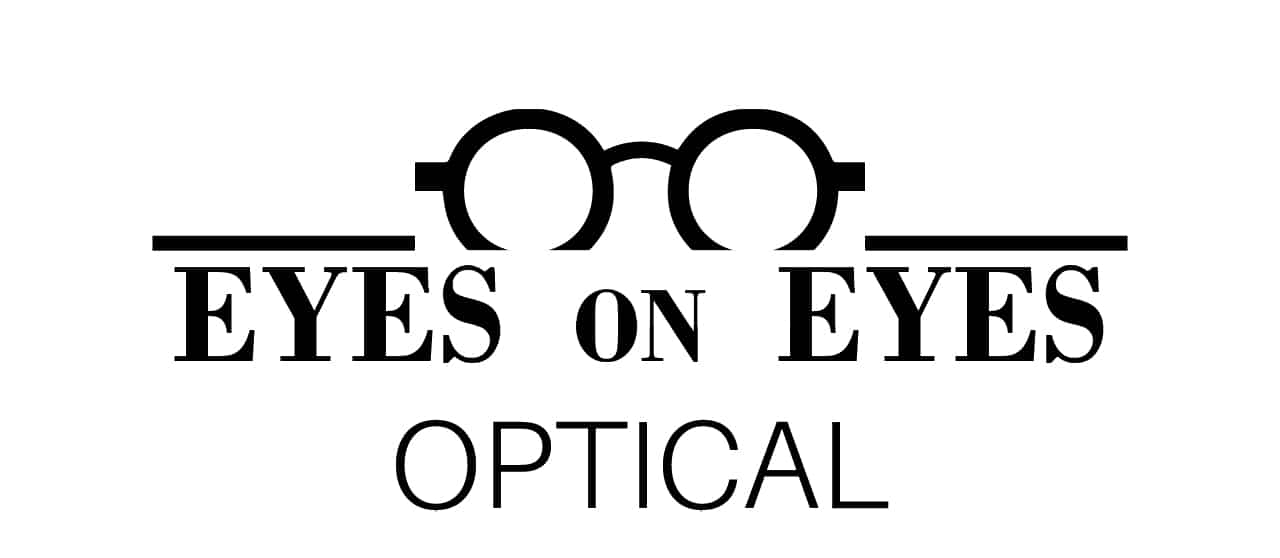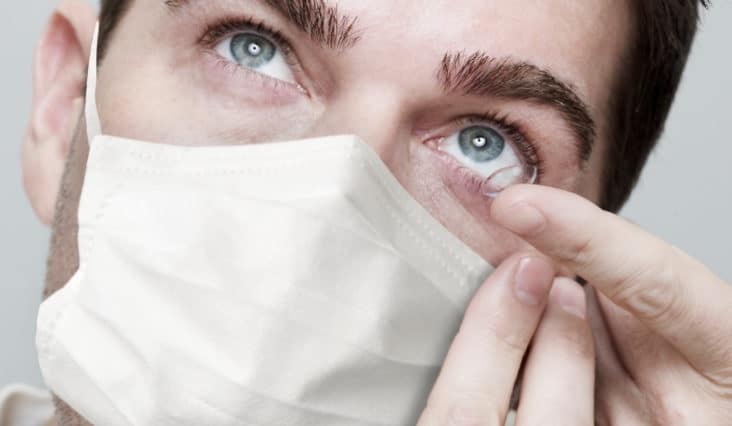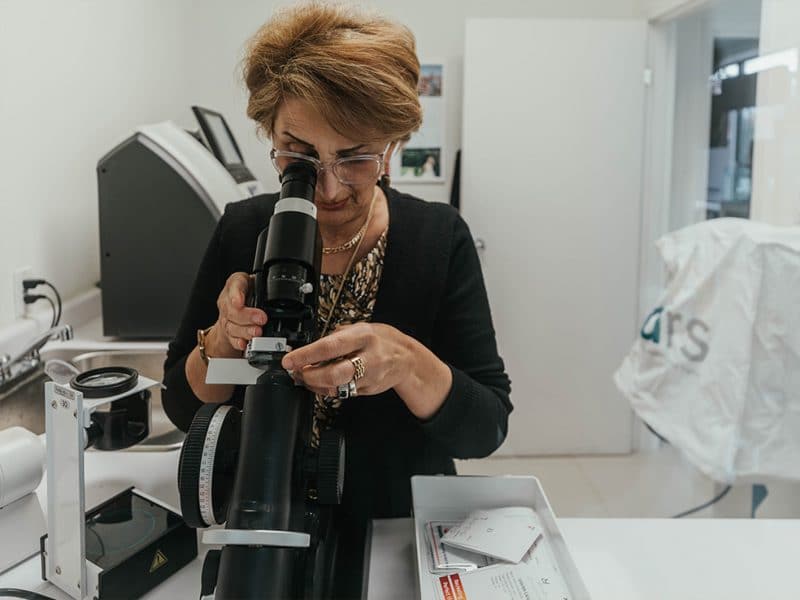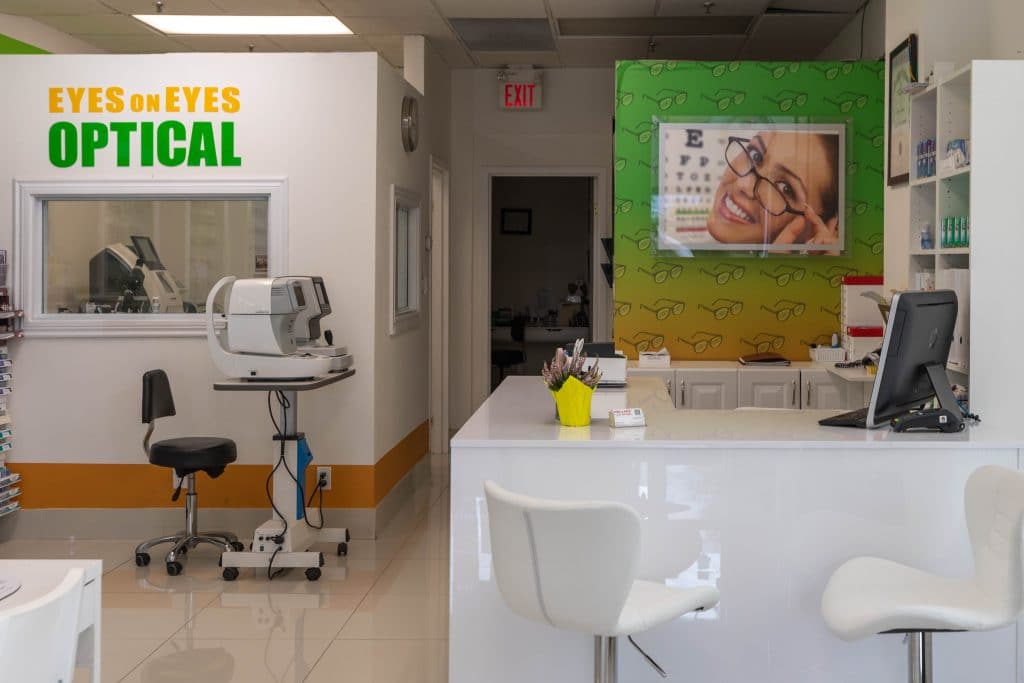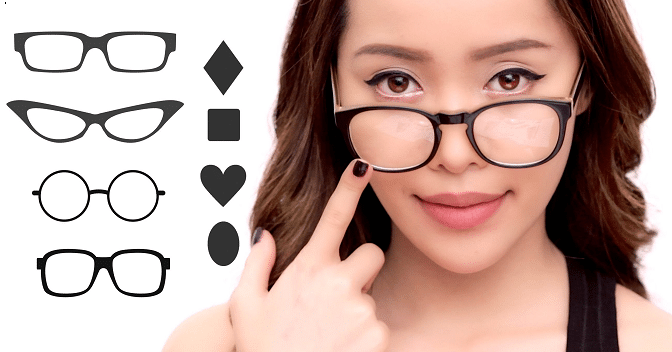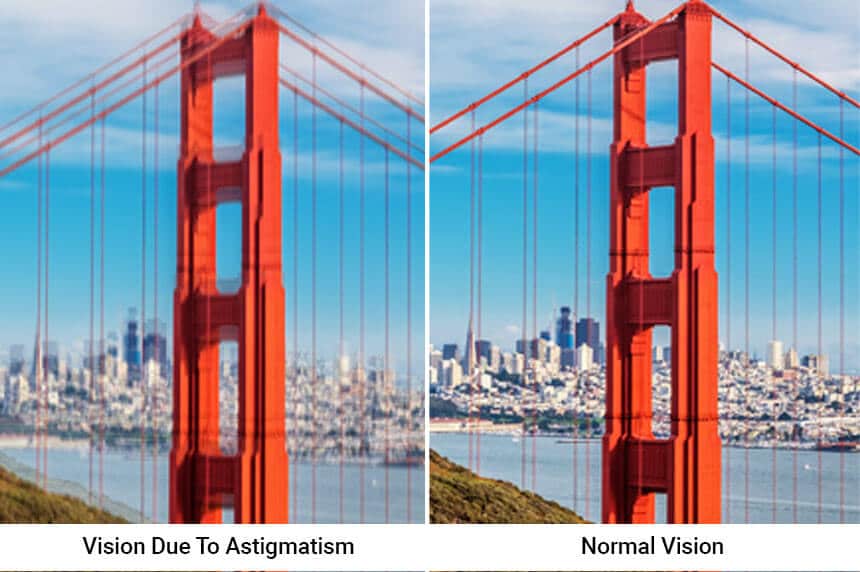Are your eyes feeling irritated and dry after wearing a face mask?
Are your eyes feeling irritated and dry after wearing a face mask?
Face masks are extremely crucial in the fight against COVID-19, and Eye Car Professionals are very well-positioned to provide patients with advice on appropriate wear in order to maximize eye comfort.
Masks significantly reduce the outward spread of air. However, exhaled air still needs to disperse; when a mask sits loosely against the face the likely route is upwards. This forces a stream of air over the surface of the eye, creating conditions that accelerate tear film evaporation, leading to dry spots on the ocular surface and discomfort.
In addition to worsening symptoms in patients with pre-existing dry eye disease, Mask Associated Dry Eye condition can affect , the elderly who typically have a poorer quality tear film, contact lens wearers, and masked people working extended hours in air-conditioned settings and/or while using digital screens.
Beyond discomfort, Mask Associated Dry Eye condition may encourage people to rub their eyes for temporary relief—raising the possibility of unwashed hands being brought to the face. In turn, this increases the likelihood of coronavirus infection through the mouth, nose, and to a lesser extent, the eye.
Therefore we recommend Systane Complete!
Each drop of SYSTANE Complete is made up of tiny, nano-sized oil droplets which combined with key ingredients, form a matrix of protection and deliver soothing moisture across the eye surface. This enhanced coverage provides prolonged hydration and lasting protection for optimal dry eye relief.

Contact lenses & Covid-19
- Contact lenses will not give you COVID-19. Contact lens wearers should always practice excellent hygiene when wearing lenses. It has been noted that contact lens wearers touch their faces and eyes when inserting and removing lenses. What you need to know is that, touching your face can spread germs.
- Exercise proper hand washing. Wash your hands carefully and thoroughly with soap and water for at least 20 seconds, followed by hand drying with unused paper towels. This should occur before every contact lens insertion and removal. If soap and water are not readily available, use a hand sanitizer that contains at least 60% alcohol. People should avoid touching their face, including their eyes, nose and mouth, with unwashed hands.
- Disinfect contact lenses. Contact lens wearers should either dispose of their daily disposable lenses every evening, or regularly disinfect your monthly and bi weekly lenses according to instructions from the manufacturer.
- Regular Eyeglasses / Spectacles Do Not Provide Protection
No scientific evidence supports rumors that everyday glasses offer protection against COVID-19.
- If you have a contact lens prescription that is nearing expiration or has expired, contact your optician or doctor of optometry. Health professionals are working with patients to ensure they have access to needed medical devices.
- If you are sick, temporarily stop wearing your contacts and use your glasses instead
Once you return to full health and have spoken with your eye doctor, you can start again. Make sure to use new contact lenses and a new lens case.
If you have questions, you can talk to our team for recommendations. To book an appointment for an eye exam to see an optometrist, call us at 905-832-6262.
Our Maple optometrist Location:
Eyes on Eyes Optical
9929 Keele St, Unit 110, Maple, ON L6A 1Y5, Tel: 905-832-6262
Please click here for more information
Eyes on Eyes Optical Store,
Eyes on Eyes Optical is a relatively new store in the Maple region. Owned and operated by Nina Toobaei. With a nursing background, Nina took on the challenge and started studying at Seneca College to become an optician. Nina has been practicing as an Optician since 2005. Nina opened the door to her own optometry, eyes on eyes optical, in the September of 2014.
She started her business with a series of promotions focusing on the needs of the community in Maple. She began with the senior citizens, making sure that every senior citizen could receive a pair of free frames and lenses. Her great promotions and her care and respect for senior citizens brought her publicity in the Maple/Vaughan area. Eyes on Eyes Optical has quickly become Vaughan's go-to optical boutique for custom-made prescription eyewear. They provide fantastic customer service with a mix of different designer eyewear from all significant fashion countries, a huge range of choices, remarkable, breathtaking designer sunglasses, sports goggles, and contact lenses. They introduce you to the latest technology in lenses and coatings. They also offer comprehensive eye exams and contact lens fittings. All under one roof and all at affordable prices! For those of you who have insurance benefits, they provide an online submission. They help to fill the insurance forms and mailing it to the insurance company.
Eyes on Eyes optometry office is equipped for comprehensive eye examination.
Dr. Natalie Saleh graduated from the University of Toronto with a Bachelor of Science degree in Biology. She received her Doctorate of Optometry from the New England College of Optometry in Boston, Massachusetts. Dr. Saleh completed externships at the South Boston Community Health Center in Boston MA, Bascom Palmer Hospital Pediatric Clinic in Miami Fl, VA Hospital in Jamaica Plain, MA and Toronto Eye Clinic and Dr. David Ng and Associates in Toronto, On. She care for the vision needs of families from eye tests to treating compromised vision and eye emergencies. They also offer the convenience of Saturday and evening appointments with our optometrists on site. To book an appointment please call 905-832-6262.
They provide you with the best product at the best value. They take pride in the work and their services. Their staff can help you choose the right glasses, and have them ready for you within the hour to 24 hours in most cases. Eyes on Eyes Optical is equipped with a state of the art laboratory, where they are able to manufacture lenses on-site. This is a place where you find your perfect vision back and they make you their customer forever.
4 Things You Need To Know Before Buying Glasses
- What is Anti-Reflection Coating (AR)?
The use of anti-reflective coating (AR coating) on lenses has many benefits. Firstly, AR coating improves visual clarity through the lenses. The use of the coating also significantly reduces strain on the eyes. The benefits of AR coating all stems from its ability to virtually eliminate all glare and reflections from the front and back of the lenses. As a positive result of the lack of glare, an increased amount of light is able to pass through the lenses which optimizes visual acuity. This leads to fewer distractions primarily at night time.
- What Are The Differences Between Polarized and Non-Polarized Lenses?
Generally, the difference between polarized and non-polarized sunglasses lies in how they impact and protect your eyes when exposed to the sun. Polarized sunglasses are able to reduce the amount of glare and sun haze you will be exposed to while in a sunny environment, while non-polarized sunglasses will not.
Benefit to Polarized Lenses
A valuable benefit polarized lenses offer is almost complete protection against the horizontal glare from the sun, making the suns reflection almost unnoticeable, resulting in a clearer more defined vision. The intensity of the emission of the sun waves is much higher than the scattered ones. Therefore making this kind of light far more harmful for the eyes and especially for those who are driving.
Polarized lenses are used to block the intense light from sun waves reflected off of flat surfaces. The reasoning behind this is that polarized sunglasses are created with vertical polarization, while the light from the sun that is reflected off of flat surfaces is horizontally polarized. Also, various polarized lens colors are made and each of them offer different benefits under various circumstances.
Benefits of Polarized Sunglasses:
- Reduce Glare, Enhance Contrast, Clarity, Light Sensitivities , Reduce Eyestrain
Benefits of Non-Polarized Sunglasses
Non-polarized lenses have a dark shade which in deed does reduce the intensity of light coming toward the eyes. However unlike polarized lenses, they are not able to counter and protect the wearer from horizontal polarization. Non-polarized lenses are unable to take into account that in which the direction the light is coming from, deeming them less protective than polarized lenses.
Even though polarized lenses improve visibility and are able to provide far better protection from the suns waves, there are some disadvantages. For example, polarized lenses may actually reduce visibility when looking at an image that is being produced by a liquid crystal display (LCD).
If you are one to be constantly under the sun partaking in activities such as jogging, outdoor sports, fishing or any outdoor activities, polarized sunglasses are most definitely the better choice for you when purchasing new sunglasses.
- The Importance of an Up-To-Date Prescription
The standard duration of validity of a prescription for adults is 2 years and 1 year for children under 18. Also, if you have diabetes, it is recommended that you get your eyes checked once a year. If you find that your prescription is outdated, you can call our location in Maple, Ontario to schedule an appointment with an Optometrist.
Below are some useful terms that you will find on your prescription:
- OD(Oculus Dexter) refers to your right eye.
- OS(Oculus Sinister) refers to your left eye.
- Sphere(SPH) indicates the amount of lens power, prescribed to correct nearsightedness (-) or farsightedness(+).
- ADD(for bifocals) is the added magnifying power applied to the bottom part of multifocal lenses to correct presbyopia.
- Cylinder(CYL) indicates the amount of lens power for astigmatism.
- Axisdescribes the positioning of the cylindrical power on your lenses (required for astigmatism).
Note: a contact lens prescription is different from an eyeglass prescription, the two are not interchangeable.
If you have questions about caring for your lenses and frames, you can talk to our team for recommendations. To book an appointment for an eye exam to see an optometrist, please call us at 905-832-6262
- Selecting the Right Frames
When trying to find the right frames, there are a few main factors you should consider when looking for the perfect fit.
Wearing the right frames can not only improve your vision, but can complement your facial features and provide a balance to your overall look. To assist in finding a frame that suits your face, we can categorize the shape of the human face into a few general categories.

Before buying a new pair of glasses and choosing your new frames, consider what your personal and professional needs are. Are you the creative professional? Are you the busy student? Or are you the stylish parent? Strictly business or young hipster? Concluding your style and looking for a frame that embodies and represents that will greatly help you find a frame that fits your personality and look.
Sizing and comfort should be your primary concern when on the hunt for finding a new frame. A frame can look great on your face but if the sizing is off they will be terribly uncomfortable. If you currently own a frame that fit you well, you can check the eyes size measurements printed on the inside arm of the frame. Also in some cases the eye size will be printed behind the nose bridge of the frame. The first number is the eye size which represents the measurements of the horizontal width of the lenses, this measurement ranges generally between 40mm-62mm. The second number following the eye size number is the bridge size. This number ranges generally between 14mm-24mm. The bridge size is the measurement between the two lenses.
Maple optometrist Location: 9929 Keele St, Unit 110, Maple, ON L6A 1Y5
SOURCES
https://www.realmenrealstyle.com/buy-prescription-glasses/
Why do I need sunglasses?

sunglasses that that reduce glare and filter 99-100% of ultraviolet (UV) rays are essential. They should be comfortable and protect your eyes without any distortion.
Why do I need sunglasses?
These invisible UV rays can damage your eyes. Some of the damage can happen right away and some can occur over a lifetime of exposure. Constant exposure to bright sunlight can damage the cornea (the clear outer part f the eye that allows light through to the retina), the lens (the part of the eye responsible for focusing), and the retina (the innermost layer of the eye that sends an image to the brain).

How can sunglasses protect my eyes from UV radiation?
All types of eyewear, including prescription and non-prescription glasses, contact lenses and lens implants, should absorb UV-A and UV-B rays. UV protection does not cost a lot of money and does not get in the way of seeing clearly. Shop for sunglasses that block 99% to 100%
How does the sun damage the eyes?
Three types of rays come from the sun:
• Visible: what you see as color.
• Infrared: invisible but felt as heat.
• Ultraviolet (also called UV radiation): invisible but often called "sunburn rays.” UV radiation includes two types of rays that normally reach the earth, UV-A rays and UV-B rays.
UV protection does not cost a lot of money and does not get in the way of seeing clearly.
of both types of ultraviolet rays: UV-A and UV-B. Sunglasses should also eliminate glare and squinting. Be wary of labels that claim a product blocks harmful UV without specifying exactly what percentage of UV rays they block.
What are Digital lenses?
Digital lenses are made using Digital technology with digital machinery. High-definition lenses are designed to supply sharper and clearer vision in all conditions. The high-definition eyeglass lenses are also called free-form lenses. The term "free-form" refers to an advanced manufacturing process.
The process is based on a digital scanning of every individual eyes. The lenses are customized exactly for your eyes. Digital lens technology, are one of the most important revolution and transformation in prescription eyeglasses.
Digital Lenses practically are six times clearer than old non digital lenses. The production of the lenses is optimized with computer-controlled surfacing equipment that is much more precise than ordinary and traditional tools.
Digital lenses are the best solution to reduce distortion in curved frames. Digital lenses intensify and increase night time and peripheral vision. Issues such as eye strain, headaches, and dizziness can all be lowered to a minimum with digital lenses. People with high prescription needs and astigmatism can also be dispensed with high definition lenses technology.
With digital lenses, patient are less restricted when choosing frame or sunglasses. Therefore, high definition lens technology provides and extends both fashion and function needs. Not only digital prescription lenses are accurate and meticulous, but they also have less distortion on the sides of the lens.
Digital lenses also have the benefit of being individually modify and adjust to suit every patient’s unique needs. Optician or eye doctor will take accurate measurements to customize a lens for every individual unique prescription.
At Eyes on Eyes Optical, we only dispense high quality digital lenses like Nikon, Hoya, Ziess,….
If you need to book an appointment to come and see an optometrist for eye exam, please either call us at 905-832-6262 or you can book an appointment via our website which is eyesoneyesoptical.ca
We have an optometrist in our office every Tuesday afternoon, Thursday morning and Saturday 10.00 to 3.00 pm
Please click here for more info
What is Anisometropia
Anisometropia is an eye condition which the two eyes have unequal power. One eye can be nearsighted or, farsighted or can have a combination of both. This condition is called antimetropia. Generally a difference in power of two diopters or more is the accepted anisometropia.
This condition occurs when your eyes have different refractive powers, that can result your eyes to focus unevenly. Normally Anisometropia occur when the two eye are a different size or different shape than the other. This condition causes unsymmetrical curvatures, unsymmetrical farsightedness, or asymmetric nearsightedness.
One of the most common causes of amblyopia that is also known as Lazy Eye, is Anisometropia.

Causes:
We still do not know completely what the causes of anisometropia are. But having different eye sizes can be a major factor.
Anisometropia influences our binocular vision. Any individual with anisometropia normally see a larger image with one eye and a smaller image with the other eye and causes blurry vision. Therefore, one of the eyes may become weaker than the other that cause the brain to favor the stronger eye. This can cause amblyopia if the anisometropia is not caught and treated early. People with untreated anisometropia may experience symptoms like headaches, nausea, dizziness, visual discomfort and poor depth perception.
Although anisometropia can be present from birth and it is not typically discover until childhood. About 6% of all children between the ages of 5 and 18 suffer from anisometropia.
There are three types of anisometropia:
Simple Anisometropia
This is when one eye is
affected while the other eye has no refractive error. The eye can be either nearsighted or farsighted.
This kind of anisometropia can be treated using spactacles. Simple
anisometropia causes one eye to see a clear image and the other eye sees blurry
image.
Compound Anisometropia
This is when both eyes are
myopic or nearsighted, although there will be a significant difference in their
refractive errors. This causes one eye to see a more blurred image than the
other. This
form of anisometropia causes both eyes to see blurry images, but one eye’s
vision will be significantly blurrier.
Mixed Anisometropia
Mixed anisometropia occurs when both eyes have refractive errors but one is myopic (nearsighted), and the other is hyperopic (farsighted).
Treatment & Management Options
Anisometropia needs to be treated as soon as it is diagnosed. If treatment is delayed the brain may decide to favor the eye that presents a clearer image over the other eye, leading to dependence on the stronger eye. If this occurs, the non-favored eye will become increasingly weaker.
Anisometropia can be treated using a variety of methods, which are determined based on the severity of the condition. Treatments can include corrective lenses, contact lenses, or laser eye surgery. For corrective lenses or contact lenses to be effective they will need to be different prescriptions so that each eye can have its visual needs met.
Individuals with large degrees anisometropia
typically cannot rely on corrective lenses for treatment. Eyeglasses have a
magnifying effect, which can significantly change the size of the image seen by
each eye. As such individuals with large degrees of anisometropia may find that
eyeglasses negatively affect their binocular vision.
If you have questions, you can talk to our team for recommendations. To book an appointment for an eye exam to see an optometrist, call us at 905-832-6262.
Please click here for more info.
Our Maple optometrist Location:
Eyes on Eyes Optical
9929 Keele St, Unit 110, Maple, ON L6A 1Y5, Tel: 905-832-6262
Polarized vs Non-Polarized
Generally, the difference between polarized and non-polarized sunglasses lies in how they impact and protect your eyes when exposed to the sun. Polarized sunglasses are able to reduce the amount of glare and sun haze you will be exposed to while in a sunny environment, while non-polarized sunglasses will not.
Benefit to Polarized Lenses
A valuable benefit polarized lenses offer is almost complete protection against the horizontal glare from the sun, making the suns reflection almost unnoticeable, resulting in a clearer more defined vision. The intensity of the emission of the sun waves is much higher than the scattered ones. Therefore making this kind of light far more harmful for the eyes and especially for those who are driving.
Polarized lenses are used to block the intense light from sun waves reflected off of flat surfaces. The reasoning behind this is that polarized sunglasses are created with vertical polarization, while the light from the sun that is reflected off of flat surfaces is horizontally polarized. Also, various polarized lens colours are made and each of them offer different benefits under various circumstances.
Benefits to Polarized Glasses
- Reduce Glare
- Enhance Contrast
- Clarity
- Light Sensitivities
- Reduce Eyestrain
Benefits of Non-Polarized Sunglasses
Non-polarized lenses have a dark shade which in deed does reduce the intensity of light coming toward the eyes. However unlike polarized lenses, they are not able to counter and protect the wearer from horizontal polarization. Non-polarized lenses are unable to take into account that in which the direction the light is coming from, deeming them less protective than polarized lenses.
Even though polarized lenses improve visibility and are able to provide far better protection from the suns waves, there are some disadvantages. For example, polarized lenses may actually reduce visibility when looking at an image that is being produced by a liquid crystal display (LCD).
If you are one to be constantly under the sun partaking in activities such as jogging, outdoor sports, fishing or any outdoor activities, polarized sunglasses are most definitely the better choice for you when purchasing new sunglasses.
If you have questions about polarized lenses, you can talk to our team for recommendations. We sell the best polarized lenses in our Maple Location. To book an appointment for an eye exam to see an optometrist, please call us at 905-832-6262. Maple optometrist Location: 9929 Keele St, Unit 110, Maple, ON L6A 1Y5
Need an eye exam or new glasses? Click here
What is Astigmatism?
Astigmatism is a common vision condition that causes blurred vision. It occurs when the cornea (the clear front cover of the eye) is irregularly shaped or sometimes because of the curvature of the lens inside the eye. ... Most people have some degree of astigmatism.
Astigmatism is a refractive error, like farsightedness and nearsightedness, meaning it is not an eye disease; it's just a problem with how the eye focuses light.
In an eye with astigmatism, light fails to come to a single focus on the retina to produce clear vision. Instead, multiple focus points occur, either in front of the retina or behind it (or both).
Astigmatism Symptoms
Astigmatism usually causes blurred or distorted vision to a certain degree at all distances.
Symptoms of uncorrected astigmatism are eye strain and headaches, especially after reading or other prolonged visual tasks.
Squinting also is also a very common telltale sign that one has developed astigmatism.
What Causes Astigmatism?
Astigmatism is caused by an irregularly shaped cornea. Instead of the cornea having a symmetrically round shape (like a baseball), it is shaped more like an American football, with one meridian being more curved than the meridian perpendicular to it.
The steepest and flattest meridians of an eye with astigmatism are called the principal meridians.
In some cases, astigmatism is caused by the shape of the lens inside the eye. This is called lenticular astigmatism, to differentiate it from the more common corneal astigmatism.
Types of Astigmatism
There are three primary types of astigmatism:
- Myopic astigmatism. One or both principal meridians of the eye are nearsighted. (If both meridians are nearsighted, they are myopic in differing degree.)
- Hyperopic astigmatism. One or both principal meridians are farsighted. (If both are farsighted, they are hyperopic in differing degree.)
- Mixed astigmatism. One principal meridian is nearsighted, and the other is farsighted.
Astigmatism can also be known and classified as regular or irregular. In regular astigmatism, the principal meridians are 90 degrees apart (perpendicular to each other). In irregular astigmatism, the principal meridians are not perpendicular. Most astigmatism is regular corneal astigmatism, which gives the front surface of the eye an oval shape.
Irregular astigmatism can result from an eye injury that has caused scarring on the cornea, from certain types of eye surgery or from keratoconus, a disease that causes a gradual thinning of the cornea.
Astigmatism Correction Options
Astigmatism, like nearsightedness and farsightedness, usually can be corrected with eyeglasses, contact lenses or refractive surgery.
If you have questions, you can talk to our team for recommendations. We sell the best lenses and coatings in our Maple Location. To book an appointment for an eye exam to see an optometrist, call us at 905-832-6262.
Our Maple optometrist Location: Eyes on Eyes Optical
9929 Keele St, Unit 110, Maple, ON L6A 1Y5, Tel: 905-832-6262
HOW TO CARE FOR CONTACT LENSES
It is an exciting time for many patients to start using contact lenses instead of glasses. Many patients love the activities they can enjoy without worrying about glasses. Even though there are many benefits of wearing contact lenses, you might be facing a risk of eye infection if you fail to care for the contacts. If you decide to wear contact lenses, you also need to have a pair of glasses as well. Please keep in the mind that contact lenses are not for 24/7. In our office, we provide Contact lens training. If you choose to wear contact lenses, then it is important to follow these tips:
Select Lenses
Do you worry about your diligence to clean and care for your contact lenses every day? If you aren’t consistent with hygiene habits, then you might consider disposable lenses instead of weekly or monthly contacts. With disposable lenses, you don’t need to worry about regular cleaning because the lenses are discarded after they are used.
Clean the Lenses Daily
- Before you touch contact lens, wash and rinse your hands with soap and warm water. ...
- Dry your hands with a clean, lint-free towel.
- If you use hair spray, use it before you put in your contact lens. ...
- Also put on eye makeup after you put in your contact lenses. ...
- Always store the lenses in fresh contact lens solution.
- Never put tap water directly on your lenses. Even distilled water can be home to nasty little bugs that can cause an infection or hurt your vision.
- Never put a contact in your mouth to rinse it.
- Clean each contact this way: Rub it gently with your index finger in the palm of your other hand. Lightly rubbing your contact removes surface buildup.
- Clean your lens case every time you use it. Use either sterile solution or hot tap water. Let it air dry
Do’s and Don’ts with your contact lenses
- Wear your contact lenses each day only as long as your doctor recommends.
- Never wear someone else’s contacts, especially if they’ve already been worn. Using other people's contact lenses can spread infections or particles from their eyes to yours.
- Never wear someone else’s contacts, especially if they’ve already been worn. Using other people's contact lenses can spread infections or particles from their eyes to yours.
- Don’t sleep with your contacts. When your eyelids are closed, your tears don’t bring as much oxygen to your eyes as when they’re open.
- Don't let the tip of solution bottles touch other surfaces, like your fingers, eyes, or contacts. Any of them can contaminate the solution.
- Wear sunglasses with total UV protection when you’re in the sun. Contacts can make your eyes more light-sensitive.
- Use an eye drop or plain saline solution or whatever your doctor recommends -- to keep your eyes moist.
- If you accidentally insert your contacts inside out, don’t worry. It won’t hurt your eye. You can
- If your eye gets irritated, take your contacts out. Don’t use them again until you’ve spoken to someone at your doctor’s office about the problem. If you keep wearing them, your eye could get infected. When you do start to wear contacts again, follow your doctor's instructions to prevent an infection.
- Go to your eye doctor right away if you have any sudden vision loss, blurred vision that doesn’t get better, light flashes, eye pain, infection, swelling, unusual redness, or irritation.
- Don’t swim with your contacts in. Goggles are better than nothing, but there’s still a chance you could get a serious infection if you wear contacts in a pool, or worse, in a lake.
Replace Your Contact Lens Case
Make sure to keep the contact lens case clean. It is a good idea to replace the case every three months. If you need a new contact lens case, then you are welcome to stop by our Maple Optometrist office to get a replacement.
Talk to our opticians to learn the proper replacement timeline for your contact lenses. Don’t make the mistake of wearing the lenses longer than recommended because you will increase the risk of an eye infection.
Regular Eye Exams
Keep in mind that your prescription will change with time. So, it is a good idea to visit your eye doctor annually to get a new prescription. This appointment is a great time for the doctor to examine your eyes and identify any early signs of eye disease.
Is it time for you to visit an eye doctor? Schedule an appointment with our team of optometrists.
Our Maple Optometrist office is located in 9929 Keele street, Maple, L6A 1Y5. To Book for an eye exam or to book for contact lens training, please call 905-832-6262
